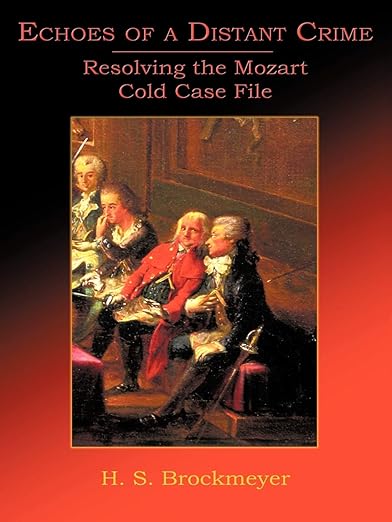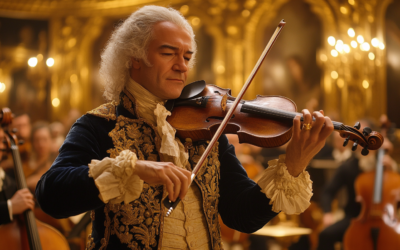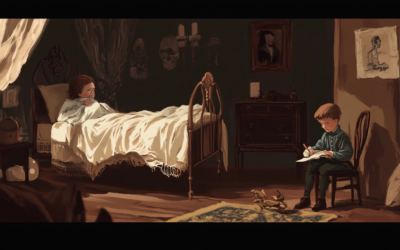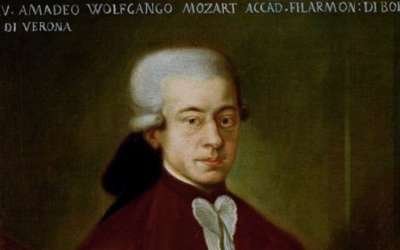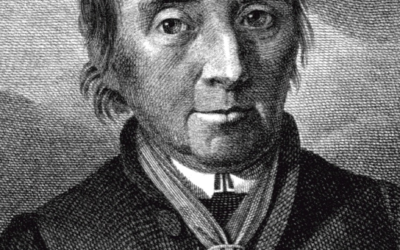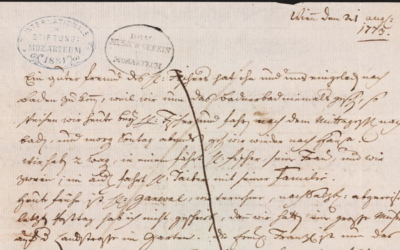Mozart’s Mysterious Letter of July 5, 1791
Unveiling the Truth Behind the Drawing
Mozartrazom is proud to present an extraordinary investigation by H. S. Brockmeyer into the puzzling discrepancies surrounding one of Mozart’s letters to his wife, dated July 5, 1791. What began as a routine request for an image reproduction from the Royal Danish Library turned into a riveting journey uncovering altered artwork, forgotten journals, and a glimpse into Mozart’s personal anxieties during his final year.
H. Brockmeyer’s meticulous research uncovers that the widely reproduced drawing associated with this letter is, in fact, a doctored version. Through detective work and historical cross-referencing, she reveals Mozart’s original, unembellished sketch—a rare insight into his psyche, marked by fears of persecution.
But the mystery doesn’t stop there. Why was Mozart’s original drawing altered? Who decided to modify it, and what does this reveal about how Mozart’s legacy has been shaped over the centuries?
H. Brockmeyer’s article is a must-read for anyone intrigued by Mozart’s life and the intersection of art and historical narrative.
“Mozart was a great musician, but not a great artist; still, there was no need to change his drawing.”
H. S. Brockmeyer
The Mystery of Mozart’s July 5, 1791 Letter
H. Brockmeyer delves into a captivating mystery surrounding one of Mozart’s letters to his wife, written on July 5, 1791. The investigation reveals discrepancies in the artwork associated with the letter and sheds light on Mozart’s personal anxieties and the legacy of his correspondence.
A Search for the Original Letter
The inquiry began with a request to reproduce the drawing associated with the July 5 letter, widely reproduced in collections like The Letters of Mozart & His Family. Directed to the Royal Danish Library, H. Brockmeyer learned that the letter was part of the Boye family donation, likely originating from Constanze Mozart’s time in Denmark. However, the letter did not include the drawing being sought, raising questions about its authenticity.
The Role of the Royal Danish Library
Thanks to the efforts of librarian Laura Søvsø Thomasen, the original drawing was discovered in an 1890 Danish literary journal, Literatur Og Kritik. This journal featured three letters from Mozart, including the July 5 letter with the original sketch. The discovery offered a side-by-side comparison of Mozart’s original drawing and a more “artistic” version that had replaced it in modern reproductions.
Mozart’s Original Drawing vs. the Altered Version
The two drawings differ significantly. Mozart’s original is simplistic and raw, while the altered version attempts to make it appear more polished. The article suggests this modification reflects a deliberate effort to enhance Mozart’s legacy, perhaps to mask his lack of artistic skill in visual arts. Both drawings, however, reveal a similar emotional tone—Mozart’s fear of persecution in his final year.
Historical Context and Legacy
The altered drawing adds to the broader narrative of how Mozart’s legacy has been shaped posthumously. Constanze, known for gifting Mozart-related items, may have played a role in disseminating the letters. Furthermore, the enigmatic tone of Mozart’s correspondence during 1791 is highlighted, referencing his sense of rejection and precarious circumstances.
Conclusion
H. Brockmeyer’s article not only uncovers a significant discrepancy in Mozart scholarship but also raises questions about how historical figures are curated for posterity. The discovery of the original drawing brings us closer to understanding Mozart as a person—flawed, anxious, and yet profoundly human.
You May Also Like
The Violin Concertos: Mozart’s Borrowed Genius
Mozart’s violin concertos are often celebrated as masterpieces, but how much of the music is truly his? This article delves into the complexities behind the compositions and challenges the authenticity of some of his most famous works, revealing a story of influence, imitation, and misattribution.
#2 The Hidden Truth of Mozart’s Education
In this video, we uncover the hidden truth behind Wolfgang Amadeus Mozart’s early education and challenge the long-held belief in his effortless genius. While history often celebrates Mozart as a child prodigy, effortlessly composing music from a young age, the reality is far more complex.
The London Notebook
The London Notebook exposes the limitations of young Mozart’s compositional skills and questions the myth of his early genius. His simplistic pieces, fraught with errors, reveal a child still grappling with fundamental musical concepts.
The Mozart Question
In this revealing interview, we delve into the lesser-known aspects of Wolfgang Amadeus Mozart’s life, challenging the long-standing myth of his genius. A Swedish journalist explores how Mozart’s legacy has been shaped and manipulated over time, shedding light on the crucial role played by his father, Leopold, in crafting the career of the famed composer.
Georg Nissen and the Missing Notebooks
After Mozart's death, his widow, Constanze, found a steadfast partner in Georg Nikolaus von Nissen, a Danish diplomat who dedicated his life to preserving the composer's legacy. Nissen not only compiled an extensive biography of Mozart but also uncovered and...
Letters Under Surveillance
In a world without privacy, Leopold Mozart’s letters were carefully crafted not just to inform but to manipulate perceptions. His correspondence reveals a calculated effort to elevate his family’s status while avoiding any mention of failure or controversy.

